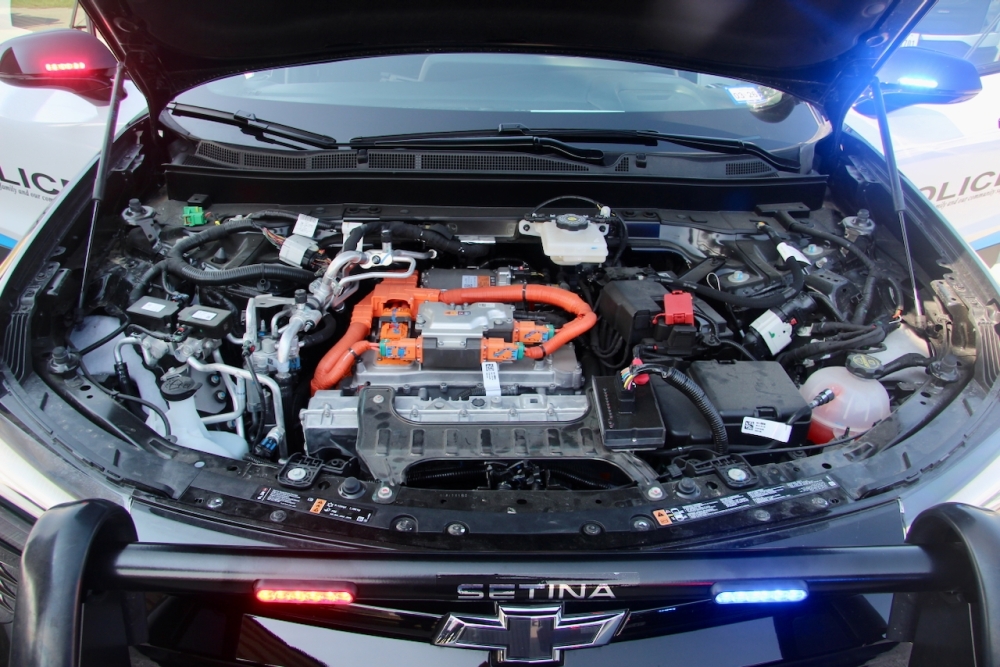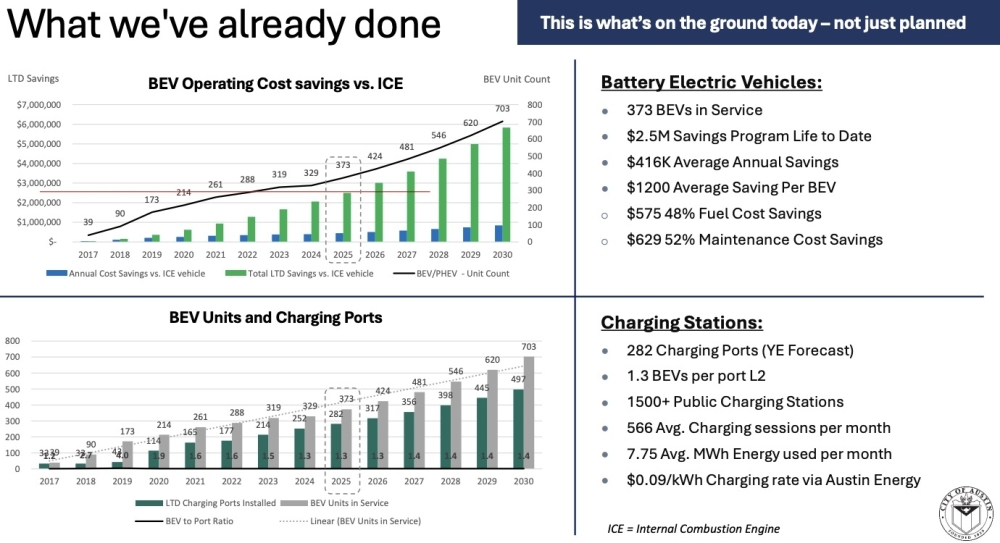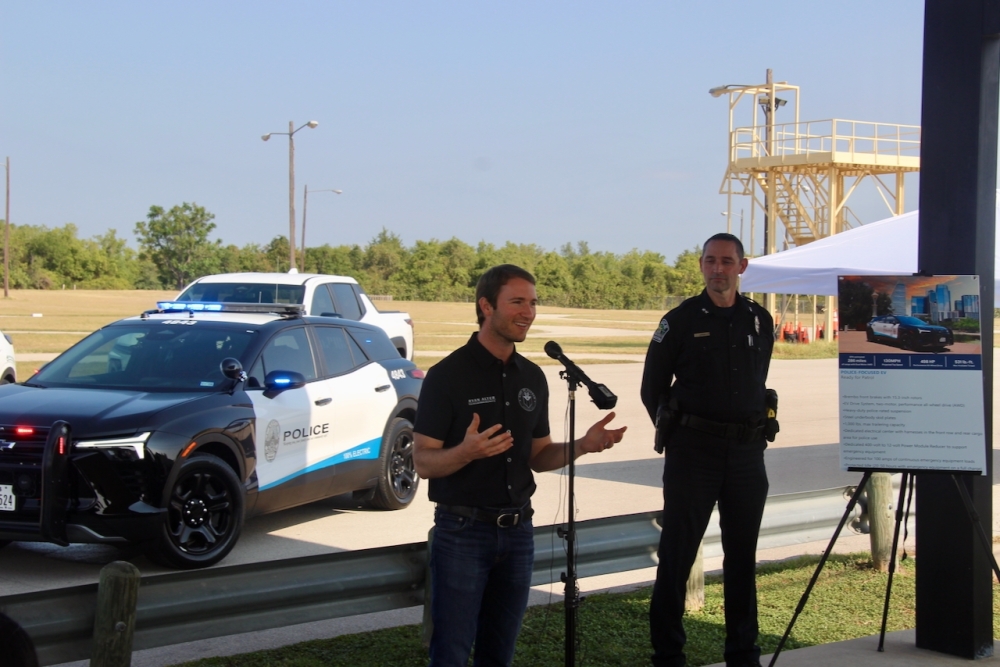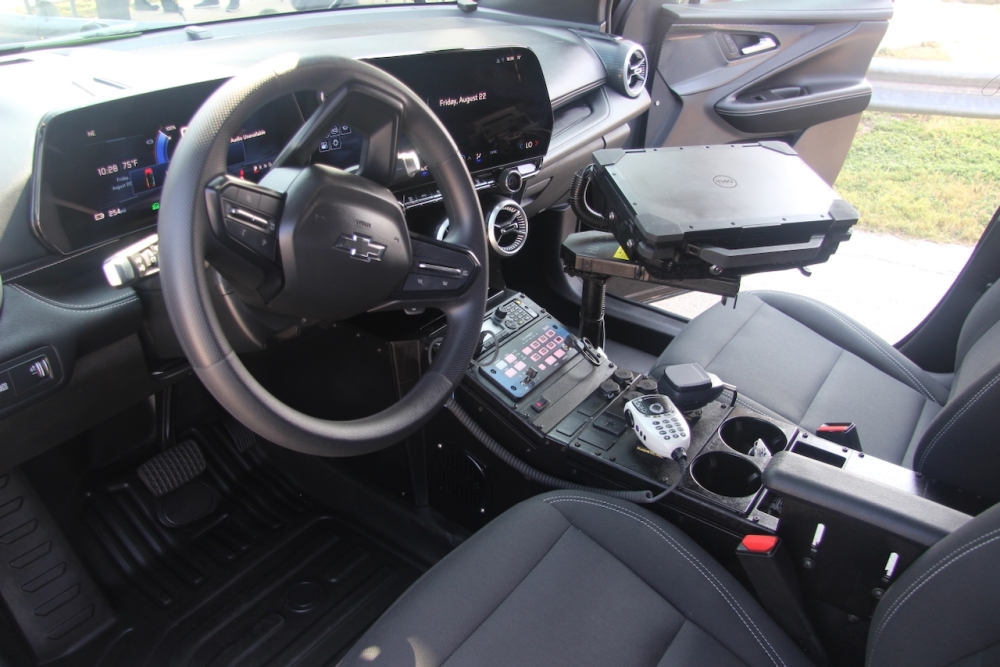The big picture
Austin's been adding electric vehicles to its fleet for years under its electrification strategy. The process is part of broader climate action goals, like using EVs for at least 40% of city vehicle miles traveled by 2030 and reaching carbon-neutral operations by 2040. There are currently 373 EVs in Austin's fleet with about 100 more to be added by late 2026, representing nearly 10% of city vehicle purchases for the year ahead.
The new APD electric pursuit vehicles are now being evaluated in a pilot before even more are potentially added in the near future. City representatives said the trial starting this year will allow officers to get used to the new vehicles, and for evaluation of factors like durability, charging and driving range, before they're more widely adopted by law enforcement.
"As technology evolves, especially with battery technology, more police departments could become interested in this sort of technology and quite frankly deploy these EV vehicles. Someone has to be the first, and we’re happy to take the lead," APD Assistant Chief Sheldon Askew said Aug. 22.
The details
APD now has a pair of fully electric Chevrolet Blazer pursuit-rated vehicles with enhanced suspension, braking and other features for police use. The EVs have an estimated range of nearly 290 miles, top speed of 130 miles per hour, and can go from 0 to 60 miles per hour in under 4 seconds.


"These are cheaper to maintain, they are cheaper to operate. And I would bet that after a year, the officers who get to drive them are going to tell you they’re a lot more fun to drive than the rest of the cars in the fleet," said council member Ryan Alter, who's promoted fleet electrification.

The police pilot program will kick off with one to two months of officer training. After that, Askew said patrols with the new vehicles will start around APD's George Sector in Central Austin. Two rapid EV charging stations were recently installed at APD headquarters downtown to support the pilot.
"We recognize that’s one of the smaller sectors in the city, and again we’re just interested to see how the electric vehicle itself will operate and where complement the rest of our fleet really is right now," Askew said. "We’re definitely excited ... and very interested to see how this new platform is going to complement our endeavors."
APD's trial run with the two Blazers could last for about a year before any decision is made about future EV conversions for the police force. Harland said the fleet department buys between 100 and 150 replacement police vehicles annually and could increase the number of EVs in those orders if the pilot proves successful. Funding for ongoing fleet conversion will depend on future city budgeting.
“Every year there’s an opportunity to scale and add more of these kinds of vehicles to their inventory. But ... we’ve got to make sure that they fit their operational service duty and that they’re robust enough to do what their frontline patrol is," he said.







